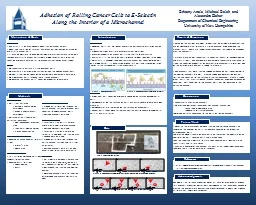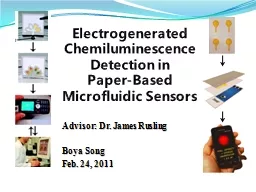PPT-Figure 3: Photograph of one of our microfluidic devices. T
Author : pasty-toler | Published Date : 2015-11-22
Quantify the differences between treated and untreated channels by recording the number of cells that became adhered to the respective microchannel walls
Presentation Embed Code
Download Presentation
Download Presentation The PPT/PDF document "Figure 3: Photograph of one of our micro..." is the property of its rightful owner. Permission is granted to download and print the materials on this website for personal, non-commercial use only, and to display it on your personal computer provided you do not modify the materials and that you retain all copyright notices contained in the materials. By downloading content from our website, you accept the terms of this agreement.
Figure 3: Photograph of one of our microfluidic devices. T: Transcript
Download Rules Of Document
"Figure 3: Photograph of one of our microfluidic devices. T"The content belongs to its owner. You may download and print it for personal use, without modification, and keep all copyright notices. By downloading, you agree to these terms.
Related Documents














